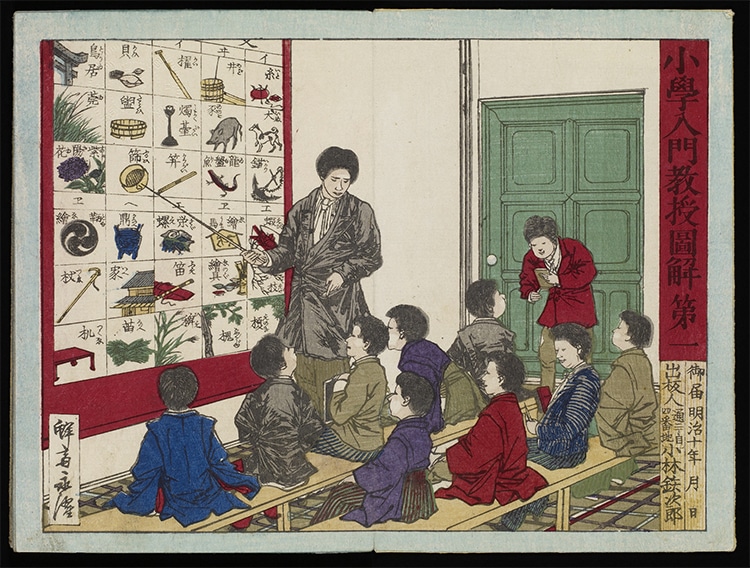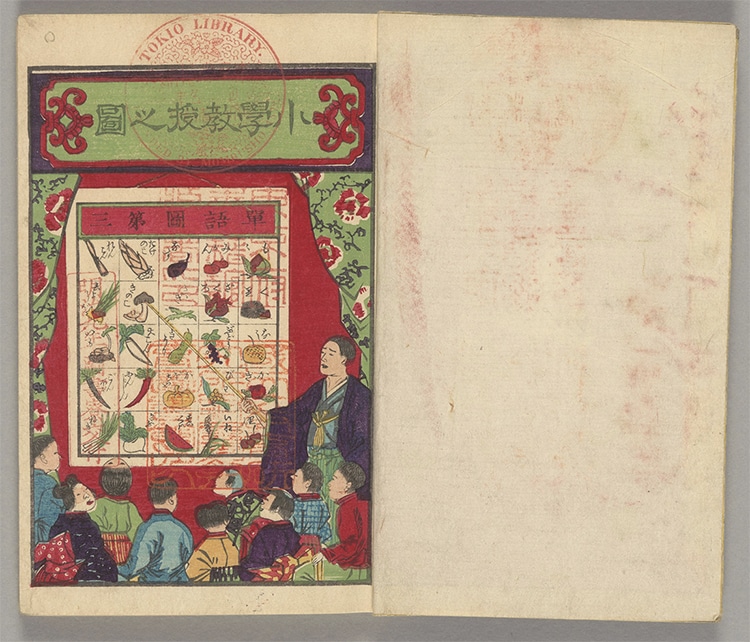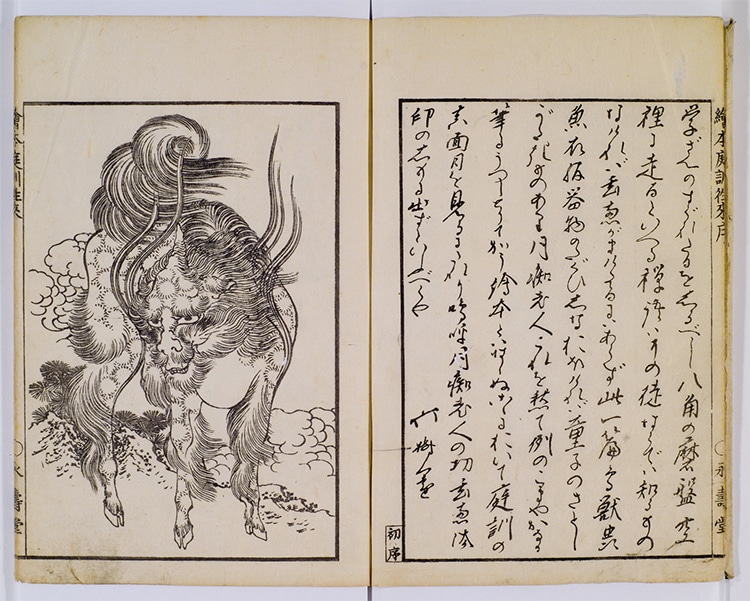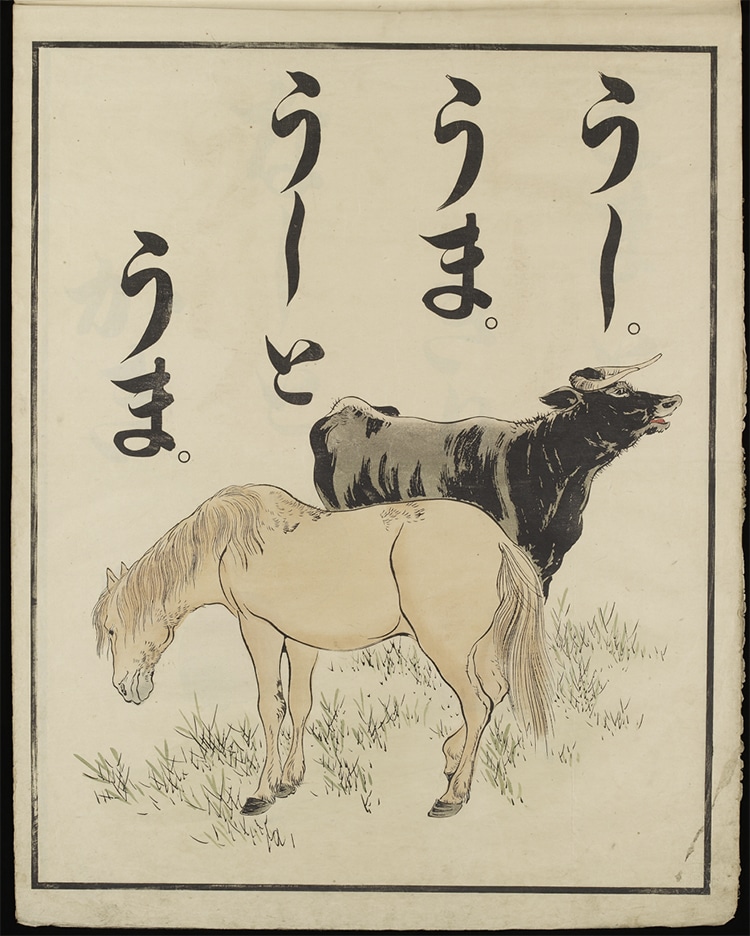An elementary school teacher teaching, 1877.
(Photo:National Institute for Educational Policy Research)
What did your school textbooks look like?
Chances are they were old, ripped, and written in.

An elementary school teacher teaching, 1877. (Photo:National Institute for Educational Policy Research)
Their computer-printed images were certainly not fine art, especially with other students' layering doodles over the years.
However, textbooks do not always have to be boring; they can be works of art.
The collection includes artwork such as hanging drawings, elementary primers, and brushwork guides for calligraphy.

A 19th-century elementary school text. (Photo:National Institute for Educational Policy Research)
Some texts are many pages long, combining elegant writing with detailed illustrations.
Others depict teachers and small pupils cross-legged in front of their lecturers.
It’s fascinating even for those who cannot read Japanese.

“Garden Lessons” picture book, 1828. (Photo:National Institute for Educational Policy Research)
These abilities to create books long pre-dated the Europeaninvention of the printing pressduring the Renaissance.
Sometimes a block print might create the lines of a drawing, which was then colored in by hand.
It was not until the 20th century that modern print technology began to replace these methods.

An elementary reading book, late 19th century. (Photo:National Institute for Educational Policy Research)
A 19th-century elementary school text.
Garden Lessons picture book, 1828.
(Photo:National Institute for Educational Policy Research)
An elementary reading book, late 19th century.

An elementary reading book, late 19th century. (Photo:National Institute for Educational Policy Research)